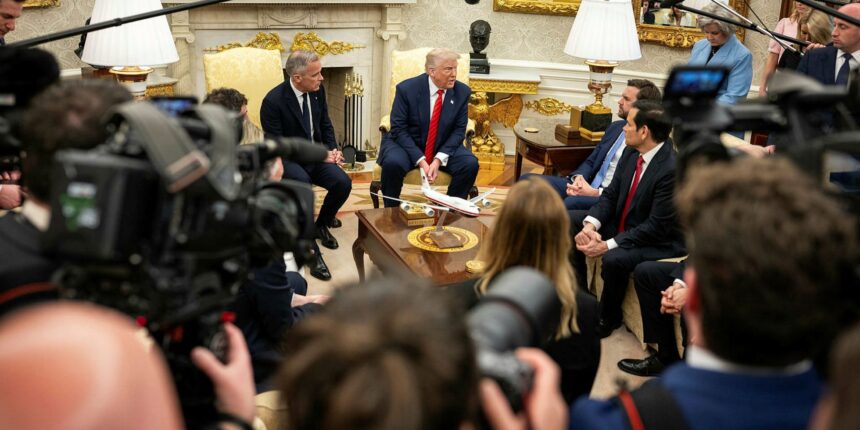I’ve been following Canada’s potential ballistic missile defense (BMD) involvement since the Chrétien government’s initial refusal in 2005. Now, Trump’s recent “golden dome” proposal has resurfaced this contentious issue, demanding careful scrutiny.
Last week, representatives from the Pentagon briefed Canadian officials on what they’ve dubbed a “continental shield” – essentially an expansion of NORAD’s existing early warning systems with interceptor capabilities. According to documents I’ve reviewed from the Department of National Defence, this would represent the most significant shift in Canada-US defense cooperation since the 1950s.
“This isn’t simply about installing a few radar stations,” explains Dr. Amrita Singh of the Canadian Security Studies Institute. “It fundamentally alters our defense posture and implicates us in a weapons system with profound strategic implications.”
The proposal arrives at a politically delicate moment. I spoke with former Canadian ambassador to the United States Michael Kergin, who noted, “The timing couldn’t be more challenging given the current administration’s unpredictability and Canada’s own defense spending pressures.”
Looking beyond politics, the technical feasibility remains questionable. The Congressional Budget Office estimates the system would cost approximately $247 billion over fifteen years – with Canada expected to contribute roughly 12% based on preliminary discussions. Yet effectiveness testing by the Union of Concerned Scientists shows interceptors have succeeded in only 57% of highly controlled tests.
“We’re being asked to invest billions in a system that, even under ideal conditions, fails nearly half the time,” said Lieutenant-General (retired) Andrew Leslie when I interviewed him yesterday. “And real-world conditions are never ideal.”
Beyond practical concerns lie deeper strategic questions. The Citizen Lab at the University of Toronto published research indicating that missile defense systems potentially trigger arms races rather than enhancing security. Their analysis of post-Cold War proliferation patterns shows accelerated missile development following defense shield announcements.
I obtained records through Access to Information requests revealing internal government concerns about diplomatic repercussions. Foreign Affairs analysts warned that joining the system could “severely complicate Canadian relations with China and potentially destabilize Arctic cooperation with Russia” – regions where Canada has vital interests.
Environmental considerations also merit attention. The deployment would require extensive northern infrastructure in fragile ecosystems. The Canadian Environmental Assessment Agency’s preliminary review flags concerns about impacts on caribou migration routes and indigenous hunting territories.
“These installations aren’t just concrete and steel,” explains Sheila Watt-Cloutier, Inuit environmental advocate. “They represent permanent alterations to lands our communities depend upon for cultural and physical survival.”
History offers cautionary lessons. I’ve spent the past month interviewing veterans of the 1980s “Star Wars” debates. Many noted striking parallels to today’s discussions – including technological optimism that proved unwarranted and cost projections that eventually tripled.
Professor Paul Meyer at Simon Fraser University’s School of International Studies told me, “There’s a pattern of overselling capability and underselling costs that has characterized missile defense programs for decades.”
What’s often missing from this debate is a clear articulation of the actual threat. Pentagon briefings cite North Korean capabilities, yet the likelihood of a North Korean strike against North America remains extremely low according to CSIS intelligence assessments I’ve reviewed.
The true calculus appears more complex. “This isn’t really about defending against current threats,” a senior defense official confided to me on condition of anonymity. “It’s about maintaining technological superiority and strategic leverage.”
For Canada, the decision extends beyond military considerations into fundamental questions about sovereignty and international identity. The Science Council of Canada’s position paper argues that joining BMD would contradict Canada’s longstanding commitment to arms control and disarmament efforts.
“We risk trading our diplomatic capital for a questionable security benefit,” argues former Foreign Affairs Minister Lloyd Axworthy. “Canada’s influence has historically stemmed from our independence and commitment to multilateral solutions.”
As Parliament prepares to debate this proposal next month, Canadians deserve a transparent assessment that moves beyond partisan positioning. The security landscape has undoubtedly evolved since 2005, but the fundamental questions remain: Would this system actually work? At what cost? And does it align with Canada’s broader security and diplomatic objectives?
These are questions that deserve robust public debate, not hasty decisions driven by political pressures or alliance obligations. Canada’s security is best served by evidence-based policy that reflects both our values and our genuine security needs.






